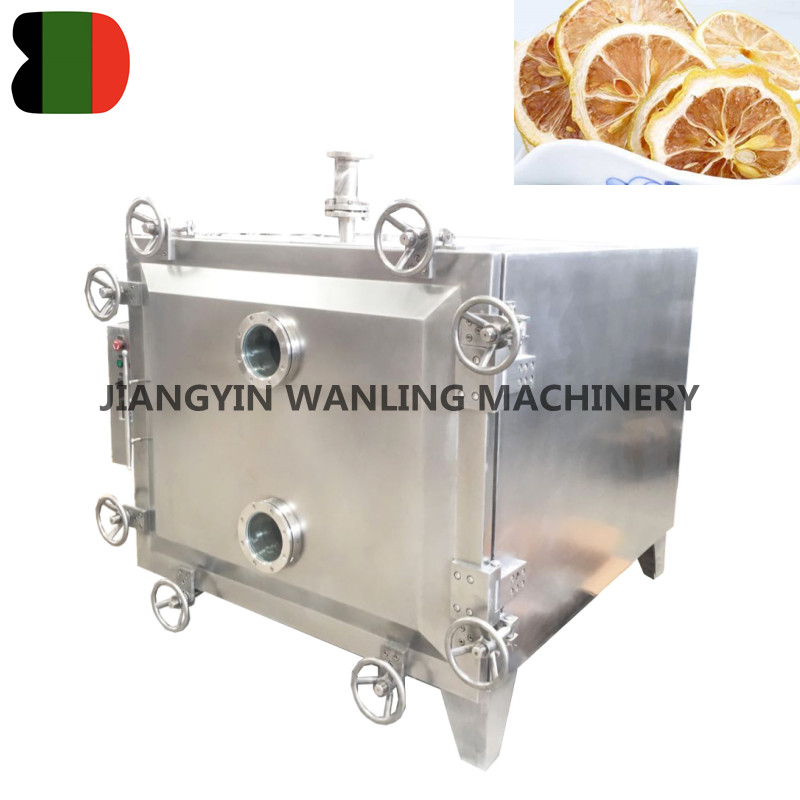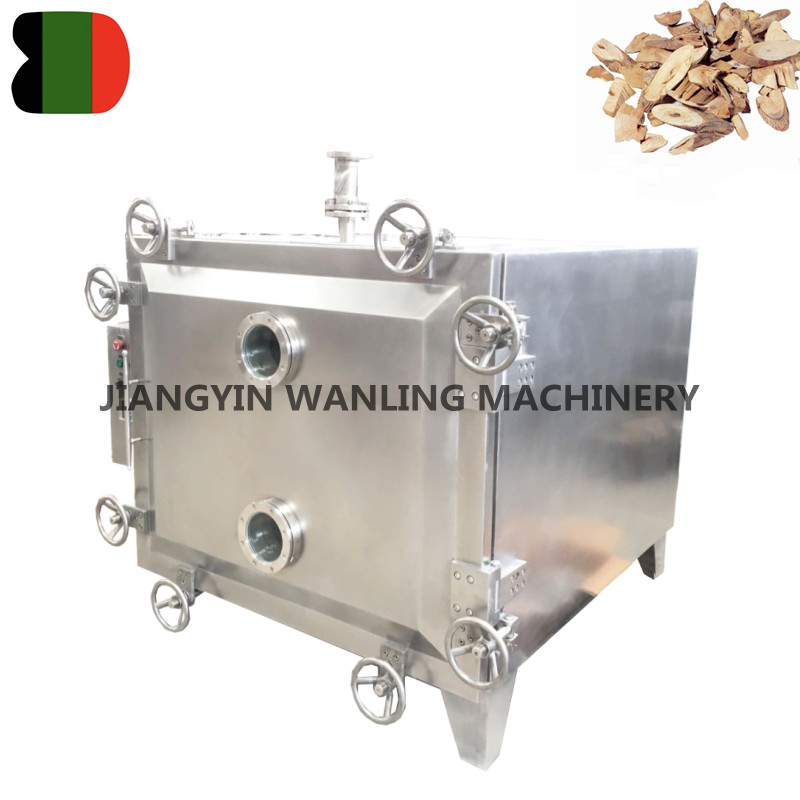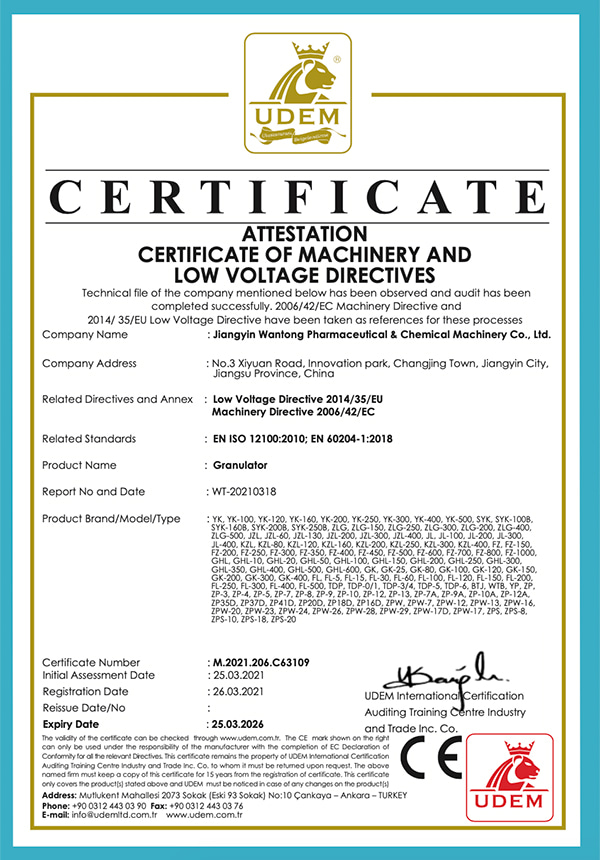Vacuum Tray Dryer Manufacturer
-

FZG Low Temperature Vacuum Tray Dryer
The FZG vacuum dryer machines are suitable for heat sensitive material that easy decomposed, polymerized and metamorphous under high tempera... -

FZG Stainless Steel Chemical Vacuum Dryer Drying Machine
Gentle drying: Low-pressure environment protects heat-sensitive materials from degradation. Fast drying: Vacuum accelerates moisture removal... -

FZG vacuum tray dryer drying machine
The vacuum tray dryer machines are suitable for heat sensitive material that easy decomposed, polymerized and metamorphous under high temper...
Vacuum tray dryer is widely used in medicine, food, light industry, chemical industry and other industries for low temperature drying. It has the advantages of fast drying speed, low pollution, and no damage to the internal components of the dried goods. Vacuum drying is the heating and drying of dry materials under vacuum conditions. It uses a vacuum pump to pump out air and moisture, creating a vacuum state in the workroom, lowering the boiling point of water, and speeding up the drying process.

About Us
Honor
-
 Honor
Honor -
 CE
CE
News
-
Industry News 2025-10-22
1. What a Horizontal Ribbon Mixer Is and Where It’s Used A horizontal ribbon mixer is an industrial ...
View More -
Industry News 2025-10-16
A tray dryer is a batch drying equipment widely used in the pharmaceutical, food, and chemical indus...
View More -
How does a double cone blender compare to ribbon blenders or V-blenders for industrial applications?Industry News 2025-10-09
A double cone blender has distinct advantages and limitations when compared to ribbon blenders and V...
View More -
Industry News 2025-10-01
Electric-Powered Tray Dryers Advantages: Precise and Stable Temperature ControlElectric-powered tr...
View More
Industry Knowledge Expansion
How is the vacuum level controlled in a vacuum tray dryer?
The vacuum level in a vacuum tray dryer is typically controlled using a vacuum pump and a pressure control system. Here's how it generally works:
Vacuum Pump: The heart of the vacuum system is the vacuum pump. This pump creates a vacuum by removing air and moisture from the drying chamber, thereby lowering the pressure inside.
Pressure Control System: The vacuum pump is connected to a pressure control system that regulates the vacuum level within the desired range. This system can include sensors to measure the pressure inside the chamber and control mechanisms to adjust the pump's operation accordingly.
Feedback Mechanism: The pressure control system receives feedback from the sensors to continuously monitor the pressure inside the chamber. If the pressure deviates from the setpoint, the control system signals the vacuum pump to either increase or decrease its pumping speed to maintain the desired vacuum level.
Adjustable Settings: Operators can typically adjust the settings of the pressure control system to set the desired vacuum level based on the specific requirements of the drying process. This might involve setting parameters such as target pressure, rate of pressure change, and tolerance levels.
Safety Features: Additionally, vacuum tray dryers often incorporate safety features to prevent excessive vacuum levels or other potential hazards. These features may include pressure relief valves, alarms, and automatic shutdown mechanisms in case of emergencies.
What benefits does vacuum drying offer in terms of product quality and preservation?
Gentle Drying Process:
One of the foremost advantages of vacuum drying lies in its ability to execute a gentle drying process. By operating at lower temperatures compared to conventional methods, vacuum drying mitigates the risk of thermal degradation that can compromise the integrity of sensitive materials. This gentleness preserves the nutritional profile, flavor nuances, color vibrancy, and aromatic essence of food products. Similarly, in the pharmaceutical realm, the potency and efficacy of delicate pharmaceutical compounds remain intact, ensuring optimal therapeutic outcomes. Whether it's the delicate structure of organic materials or the fragile balance of active ingredients, vacuum drying delicately preserves the essence of the product.
Uniform Drying:
Uniformity in drying is not just a desired outcome; it's a hallmark of excellence. Vacuum drying excels in this aspect, offering unparalleled uniformity throughout the drying process. The controlled environment within the vacuum chamber facilitates even distribution of heat and moisture removal, resulting in consistent moisture content across the entire product. This uniformity translates into enhanced product quality, reducing the risk of uneven texture, moisture gradients, or undesirable variations in attributes. From crispy snacks to pharmaceutical powders, the uniformity achieved through vacuum drying sets a new standard of excellence.
Preservation of Volatile Compounds:
In the intricate world of volatile compounds, preservation is paramount. Vacuum drying emerges as a guardian, protecting the integrity of volatile compounds with unwavering precision. By minimizing oxygen levels and operating at lower temperatures, vacuum drying safeguards essential oils, flavors, and pharmaceutical actives from degradation. The result is a product that retains its aromatic allure, flavor potency, and therapeutic efficacy, captivating the senses and fulfilling its intended purpose with unparalleled precision.
Controlled Environment:
Control is the cornerstone of quality and preservation, and vacuum drying offers a realm of meticulous control over the drying environment. With precise management of temperature and pressure conditions, the risk of microbial proliferation, enzymatic degradation, and chemical reactions is mitigated. This controlled environment extends the shelf life of products, ensuring that they maintain their pristine quality over time. Whether it's preserving the freshness of food products or maintaining the stability of pharmaceutical formulations, the controlled environment of vacuum drying is a testament to meticulous craftsmanship.
Minimized Contamination:
In a world fraught with contaminants, purity is paramount. Vacuum drying emerges as a fortress, fortifying products against the onslaught of impurities. By minimizing air movement within the drying chamber, vacuum drying reduces the risk of contamination from dust, microbes, and foreign particles. This purity ensures that the product meets the highest standards of quality and safety, instilling confidence in consumers and stakeholders alike.
Energy Efficiency:
In the pursuit of sustainability, energy efficiency reigns supreme. Vacuum drying, with its judicious utilization of energy resources, emerges as a beacon of efficiency. By operating at lower temperatures and harnessing the latent heat of vaporization, vacuum drying achieves significant energy savings without compromising on performance. This energy efficiency not only reduces operational costs but also aligns with environmental stewardship, paving the way for a more sustainable future.



 Español
Español
